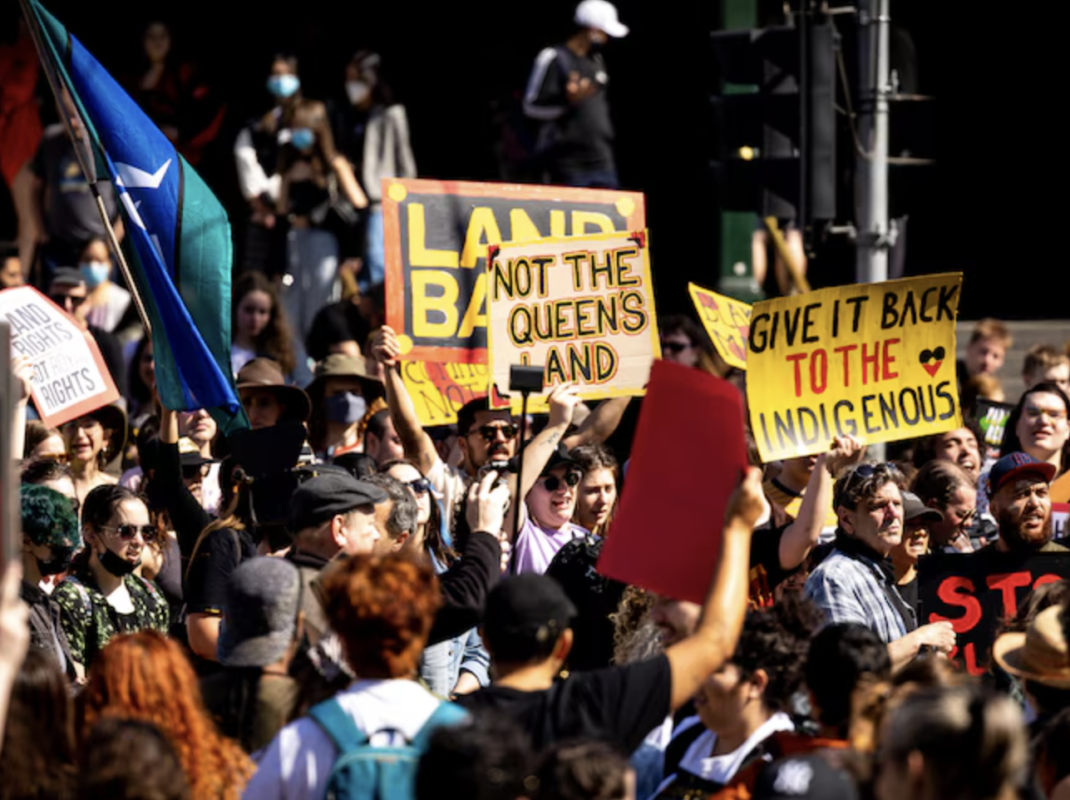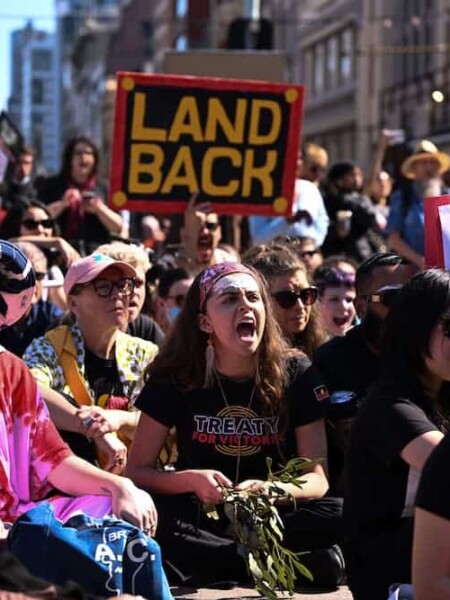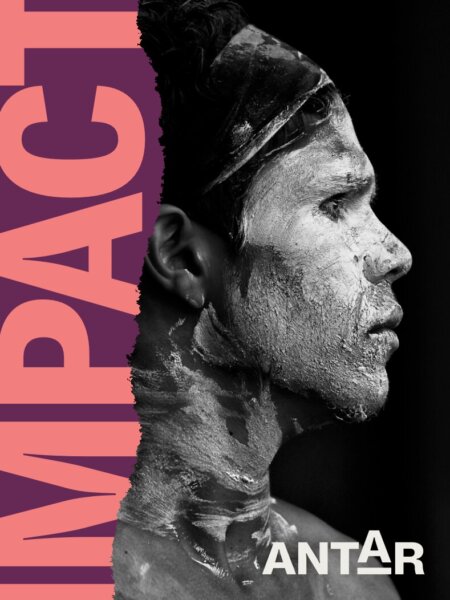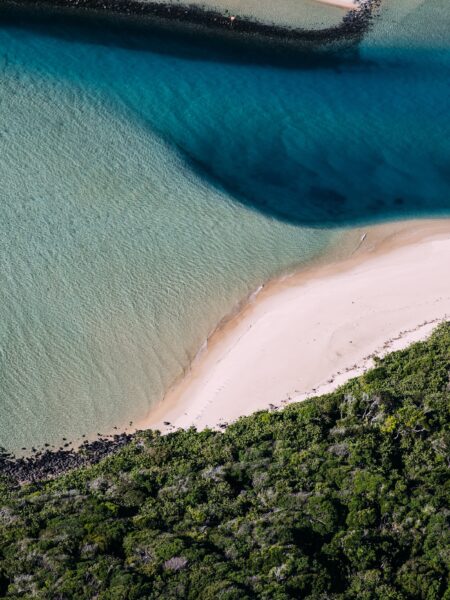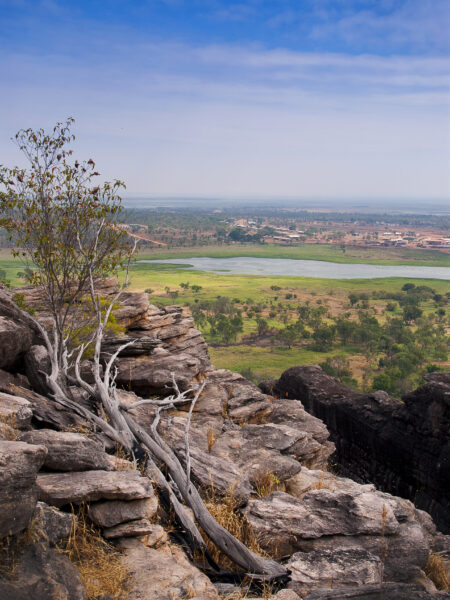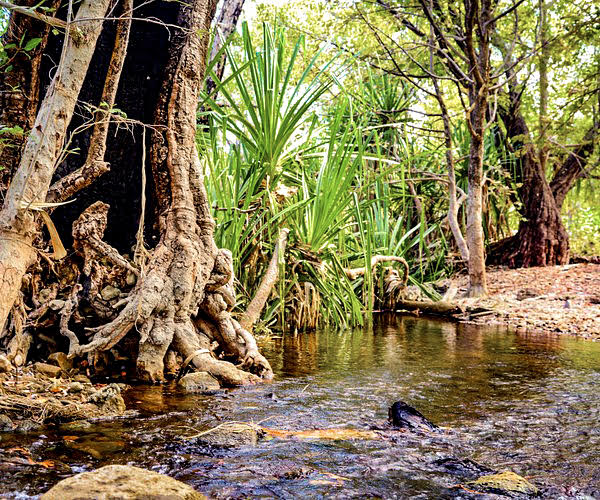The significance of the Land Back movement can be understood as a recognition of the illegal colonisation of Australia and the ongoing impacts of settler colonialism. Land Back counteracts settler colonial acts which enable ongoing dispossession and oppression by being a tool of genuine decolonisation. The application of Land Back in the Australian context is varied and diverse, ranging from the pursuit of native title and land rights in the legal sphere (where progress is evident but limited) through to the purchasing of land by First Nations communities and return of land both directly and through NGOs and charities. These more recent examples of ‘land back’ demonstrate a hopeful future with great potential for substantive and transformative reconciliation as well as greater decision-making powers for First Nations Peoples in Australia.
From ownership to custodianship
Land Back goes beyond just the re-acquisition or ownership of land, and should not be understood using Western notions of ownership and possession. Importantly, First Nations Peoples’ relationships to land are focused on notions of reciprocity and custodianship. This comes together with the understanding that land is deeply interconnected with issues such as climate justice, food sovereignty, and language revitalisation. Many First Nations Peoples, both globally and here in Australia, possess deep knowledge of cultural and sustainable land management practices that have been in existence since time immemorial. The continued use of these knowledges and practices ensures biodiversity and habitat restoration to mitigate negative climate impacts, in turn allowing for the resurgence and protection of traditional food pathways and the revitalisation of native languages. These elements culminate in First Nations Peoples’ unique connection to and preservation of Country and culture.
We see land as not something to be owned, but something that owns us. So land back isn’t necessarily about land ownership. Land back is about culture back, language back, ceremony back, water back.
Common Ground
The global and transnational nature of the Land Back movement has meant greater popularity and momentum for the proper return of land to First Nations Peoples. This includes increasing recognition of the unique spiritual, ancestral and cultural connection of First Nations Peoples to land and waters, as well as the significant role that they play in protecting global biodiversity.
Land Back in action
In 2022, a group of Anaiwan people from the New England area of northern NSW successfully reclaimed 240 hectares of their traditional lands. The group led this Land Back initiative as a means of revitalising their culture and language. As a result of successful crowd funding and widespread public support, the group was able to buy back a portion of their land. Members of the local Nēwara Aboriginal Corporation have spoken to the value of buying land back directly. They believe that obtaining land through the government systems of land rights and Native Title has ‘strings attached’ and caveats, whilst owning the land outright allows for true First Nations self-determination.
The Newara Aboriginal Corporation has reported many achievements in 2023 including a: Community cultural burn; New ranger position; New illustrated language book; Song and Dance Camp; Family & skinship workshops; Anaiwan language programs and cultural experience programs.
The achievements of the Newara Aboriginal Corporation demonstrates the importance and potential of the Land Back movement. With genuine land custodianship, First Nations Peoples and especially younger peoples, are better able to connect with their culture, community, languages and practices. Furthermore, the community ownership model established by the Newara Aboriginal Corporation challenges the logic of residential property ownership, and asks non-Indigenous Australians to consider the greater possibilities and purpose of land beyond individual asset ownership. Through Land Back, the Anaiwan people exemplify a hopeful future of First Nations sovereignty, self-determination, prosperity and healing on Country.
Buying land outright means self-determination. We can do what we like with it.
Dave Widders, Anaiwan man
Case study: Newara Aboriginal Corporation and Women’s Shelter
The Women’s Shelter Armidale (WSA) partnered with the Newara Aboriginal Corporation to revive Anaiwan Women’s Ceremonial skills and as a result, restore lost cultural connections on Anaiwan Country. The loss of Lore suffered by the Anaiwan people due to the dispossession of their land, meant that there were no culturally trained Anaiwan women able to conduct a smoking ceremony when the WSA sought to do so. After this became apparent, the WSA created the Smoking Ceremony Lore Revival Program in collaboration with the Newara Aboriginal Corporation which aimed to reconnect local women elders and emerging elders with traditional Smoking Lore as practised by men within the community.
The program has exposed how the loss of Anaiwan culture and cultural connection to Lore negatively impacts local First Nations women, families and community, and highlights the necessity of such programs. The WSA has recognised how the move by the Anaiwan community to support their clients provides both an opportunity for ongoing community education on domestic and family violence and raises the profile of the associated issues within the community. The staff at the WSA have observed the immense benefit of culturally significant interventions to the First Nations women in their community. The Smoking Ceremony Lore Revival Program perfectly illustrates the cultural resurgence and community benefit that Land Back is able to facilitate.
What can allies do?
While the global Land Back movement is largely driven by First Nations peoples, activists, land and water defenders and their communities, a groundswell of public support is necessary. There is an important role for non-Indigenous allies in the Land Back movement who can stand in support of First Nations communities, amplifying their voices and calls for the protection of Country, as well as defend their lands and waters from the risks and threats of resource extraction, short-term exploitation and cultural heritage destruction. The future of Land Back holds great promise of a new relationship to Country – one that is decolonised, respectful and reciprocal.
When we say ‘land back’ we are asserting Country’s Law – the First Law (and what will be the last Law) – including our rights and our commitment to protecting, healing and sustaining Country, now and for generations to come…. It’s loaded with the political resistance of the Aboriginal land rights movement and all of the protest cries of our Elders who marched. It stands for the justice and reparations we have never received, the safe-haven our grandmothers always wished for us, the staunchness of the frontlines and resistance sites today… and it represents hope for our generation today – in finding and fulfilling our special purpose as Indigenous peoples, once again.
Kaleesha Morris, GumBaynggirr, Dunghutti and Kulkalgal
Learn More
Land Back Factsheet
To read a more on the Land Back movement, you can access our Factsheet here.
Show me More
